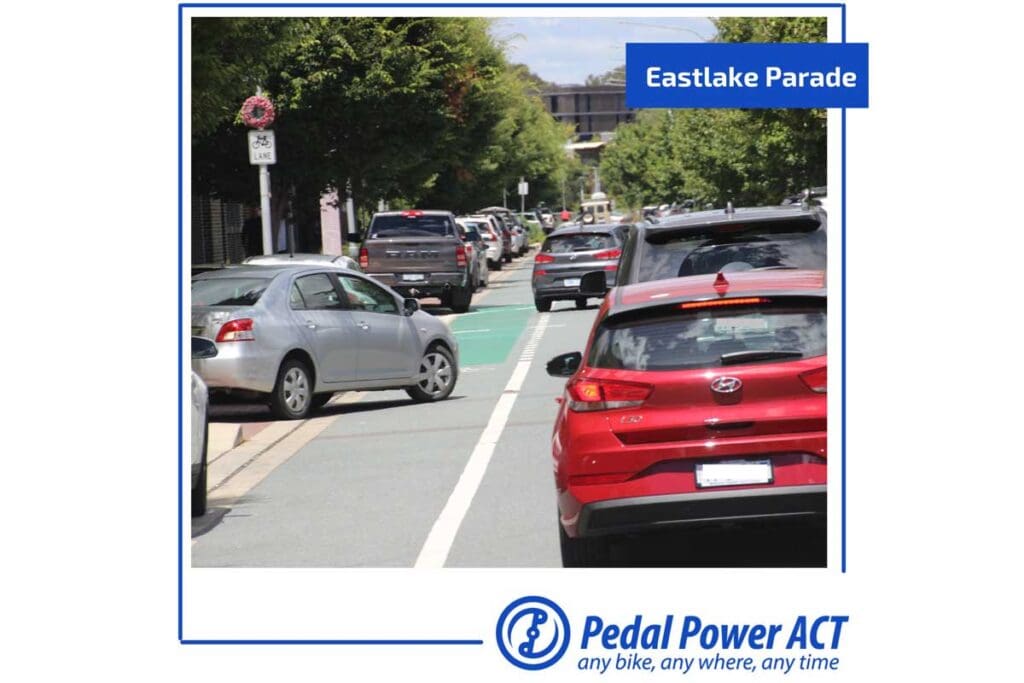Four-Point Revolt Against Canberra’s ‘King’ Cars

Canberra, ACT
ACT bike advocacy group Pedal Power has launched a four-point plan for Active Travel in Canberra, hoping to give the Territory’s government greater focus and urgency after it released its own Draft Active Travel Plan.
With public submissions on the government’s draft scheduled to close today, Pedal Power’s four-point strategy calls for greater investment in a cycling network, the creation of pedestrian and cycle friendly neighbourhoods, investment in recreational cycling to rebuild Canberra’s image as ‘Australia’s Cycling Capital’ and the creation of a highly connected, diverse, medium-density city.
“If we do not implement the Active Travel Plan, and soon, Canberra will become a more car-centric environment, spread out, and hostile to active travel alternatives.”
Pedal Power has commended the “lofty goals” of the government’s draft plan, just as it applauded Transport Minister Chris Steel’s delivery of an ACT Government Active Travel Statement in the Legislative Assembly in March 2022.
“This policy framework promises to deliver projects that will fundamentally transform Canberra’s active travel environment,” the advocacy group says in its submission.
“However, while the Draft Active Travel Plan is a good broad document, it has no timelines or commitment to increased funding to make it happen. It remains unclear when key projects and policy reforms will be delivered.
“If we do not implement the Active Travel Plan, and soon, Canberra will become a more car-centric environment, spread out, and hostile to active travel alternatives. More than ever, the car remains ‘king’ in Canberra.”
It says while Canberra’s cycling rates are the highest in the country, “trips by bike still only represent less than 2.7% of the 1.3 million trips that Canberrans make every day”, representing 35,000 trips made daily by bike.
“For the sake of our health, wellbeing, and environment, we must support more Canberrans to switch from private car to active travel,” according to the submission, which appeals to the Territory’s parochialism.
“Globally, cities such as Wellington, Paris, Amsterdam, London, and New York are investing heavily in cycling infrastructure. The construction of systems of dedicated separated cycle lanes are seeing cycling participation skyrocket.
“Australian capital cities such as Sydney, Melbourne, and Perth, are starting to do the same, risking them overtaking Canberra in the cycling stakes.”
In pushing for an improved cycling network, Pedal Power acknowledged the ACT Government had invested in some “nation-leading cycling infrastructure projects in recent years”.
But it says multiple shortfalls remain, including gaps in the cycle network, poor maintenance on many paths, a lack of lighting, segregated road crossings and secure bike parking.
The group says there is also an over-reliance upon on-road cycle lanes, “which makes many people on bikes uncomfortable”.
“As the top priority, we recommend the Government design, build, and upgrade this network within the next five years, and build upon this network through invited feedback from the community,” it says.
Bike-Friendly Neighbourhoods
The organisation proposed several measures to establish active transport-friendly neighbourhoods: including 30kmh speed limits for suburban roads and town centres, upgrading street lighting, and introducing an annual car-free day.
It calls on the government to reinvigorate its Active Streets program.
“While separated cycling infrastructure is core to increasing cycling participation, we do not expect it to be built on every road in the city,” it explains.
As part of its call for a more connected Canberra, Pedal Power appealed for all public transport stops to be accessible via active travel.
It says it’s essential for all major public transport locations to have secure bike parking, and that all mass public transport vehicles carry bicycles.
View Pedal Power’s full submission.
See the ACT Government’s draft Active Travel Plan and provide feedback.
Join the Conversation
Do you believe Canberra is becoming more or less conducive to travelling by active transport?
